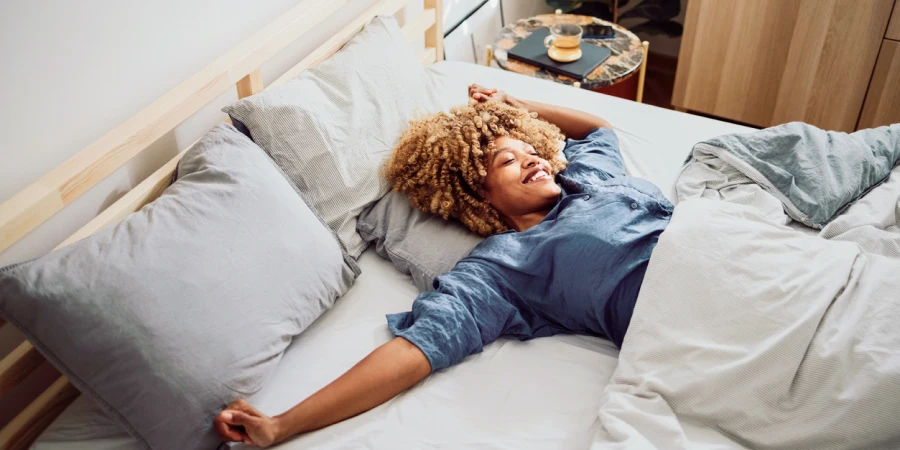Table of Contents
● Introduction
● Market Overview and Business Insights
● Understanding Fabric Comfort: Key Considerations for Sheet and Pillowcase Selection
● Strategies for Navigating the U.S. Market for Bedding
● Conclusion
Introduction
As summer temperatures soar across the United States, ensuring a good night’s sleep becomes a top priority for consumers. Selecting the right sheet and pillowcase set can make all the difference in beating the heat and waking up refreshed. In this article, we’ll dive into the latest market trends, expert opinions, and key considerations for choosing the perfect bedding to keep your customer cool all summer long.
Market Overview and Business Insights
Detailed Market Size, Growth Projections, and CAGR
The U.S. bedding market recorded a revenue of US$19.40bn as of 2024, generating the highest revenue in this segment global-wise. It is projected that the U.S. market will experience an annual growth rate of 3.82% (CAGR 2024-2029) according to Statista.com. Within this market, sheets and pillowcases account for a significant share, with consumers increasingly prioritizing comfort and quality in their bedding choices.
Global comparison:Top Countries by Revenue

Consumer Trends in Seasonal Bedding Choices
Seasonal bedding preferences have become more prominent in recent years, with consumers seeking specific materials and weaves to suit different weather conditions. During the summer months, lightweight, breathable fabrics such as cotton, linen, and bamboo have gained popularity due to their cooling properties. A survey by the National Sleep Foundation found that 85% of respondents change their bedding with the seasons to improve sleep quality. To stay ahead of the curve, bedding manufacturers and retailers must keep a close eye on market data and expert opinions. “Consumers are becoming more discerning when it comes to their bedding choices, especially during the summer months,” says Sarah Johnson, a home textiles industry analyst. “Brands that can offer innovative, cooling fabrics and designs will have a competitive edge in this growing market.” Analyzing market data and customer feedback can also help identify gaps in the market and inform product development strategies.
Understanding Fabric Comfort: Key Considerations for Sheet and Pillowcase Selection
The Role of Material and Weave in Comfort
The material and weave of a sheet or pillowcase can significantly impact its comfort level and cooling properties. Natural fibers like cotton, linen, and bamboo are popular choices for summer bedding due to their breathability and moisture-wicking capabilities. The weave of the fabric also impacts its feel and performance. Percale weaves, characterized by a crisp, cool feel, and sateen weaves, known for their smooth, silky texture, are both favored for their comfort in warm weather. Let’s take a closer look at some of the most popular materials and weaves for summer bedding:
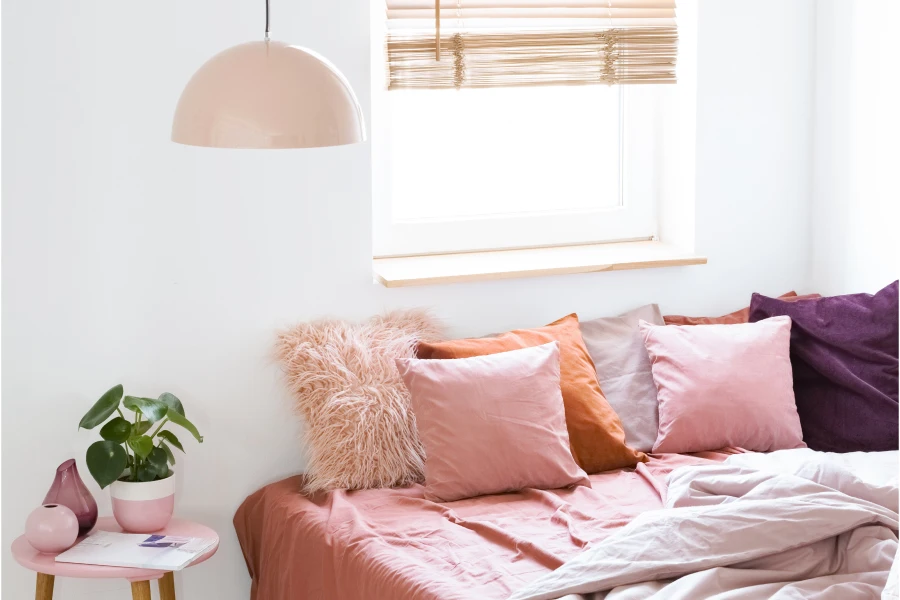
- Cotton: Cotton is a classic choice for bedding due to its softness, durability, and breathability. It comes in various subtypes, each with unique characteristics:
- Egyptian Cotton: Known for its long, luxurious fibers, Egyptian cotton is highly breathable and moisture-wicking, making it an excellent choice for hot summer nights.
- Pima Cotton: Similar to Egyptian cotton, Pima cotton is a high-quality, long-staple variety that offers exceptional softness and breathability.
- Supima Cotton: Grown exclusively in the United States, Supima cotton is an extra-long staple variety that combines the best qualities of Egyptian and Pima cotton, providing superior comfort and durability.
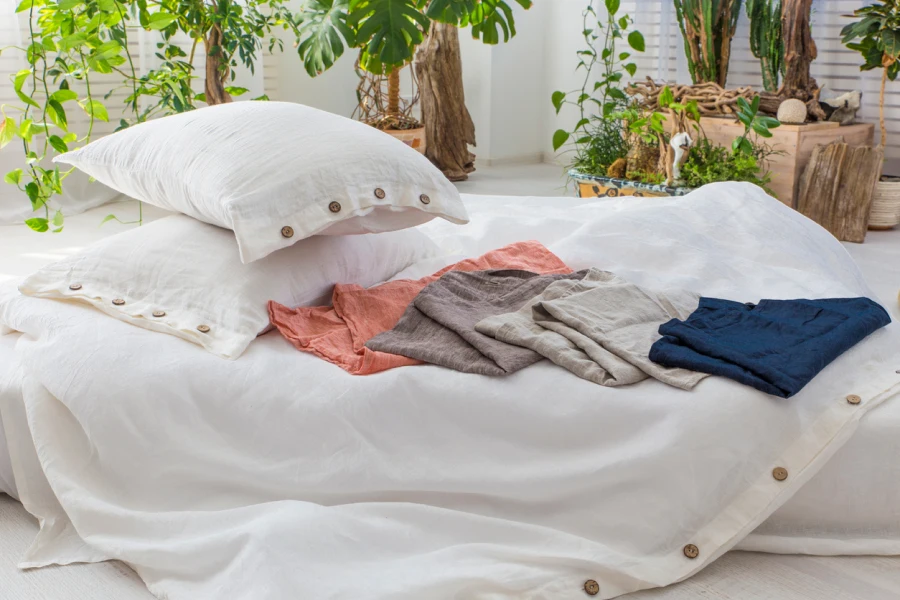
- Linen: Made from flax fibers, linen is a highly breathable and moisture-wicking material that feels cool to the touch. Its unique texture and natural wrinkles give it a relaxed, casual appearance, perfect for summer bedding. Linen is also hypoallergenic and resistant to dust mites, making it an excellent choice for people with allergies or sensitive skin.
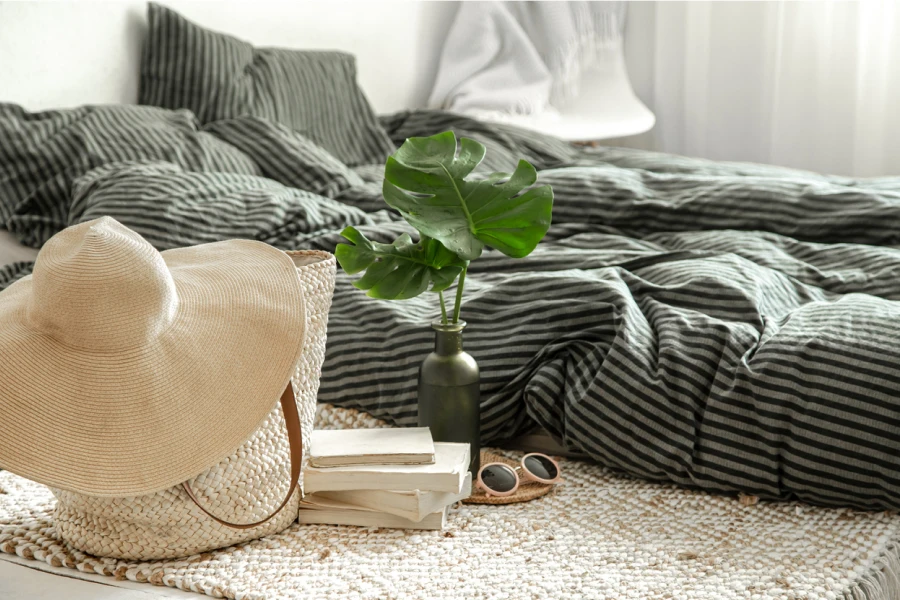
- Bamboo: Bamboo bedding has gained popularity in recent years due to its eco-friendliness, softness, and temperature-regulating properties. Bamboo fibers are naturally moisture-wicking and have a silky smooth texture that feels cool against the skin. They are also hypoallergenic and resistant to odors and bacteria, ensuring a fresh and healthy sleep environment.
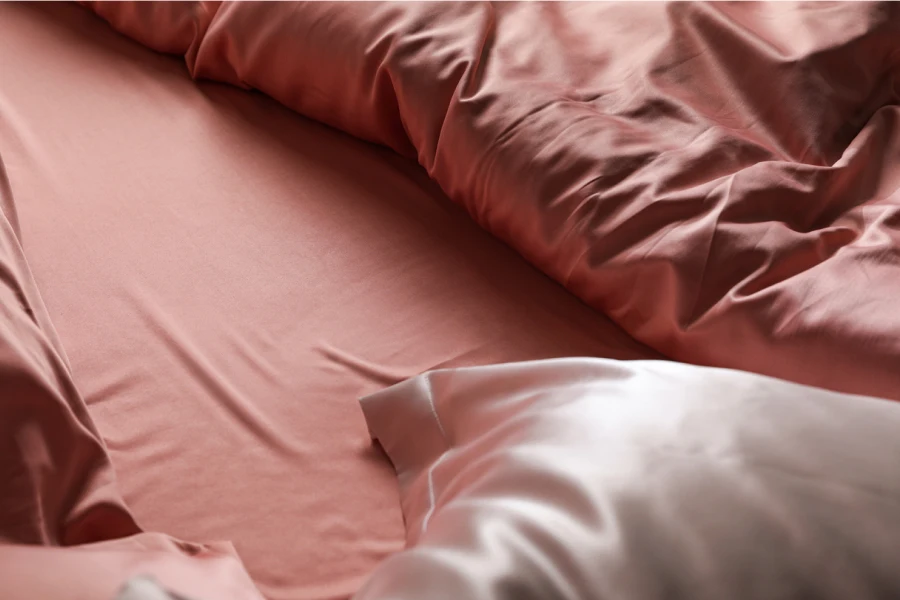
- Tencel: Tencel is a type of rayon made from sustainably-sourced wood pulp. It is known for its exceptional softness, breathability, and moisture-wicking capabilities. Tencel fibers are smooth and gentle on the skin, making them an ideal choice for people with sensitive skin or those prone to night sweats.
In addition to the material, the weave of the fabric also plays a significant role in its comfort and performance:
- Percale: Percale is a plain weave that creates a crisp, cool, and lightweight fabric. It is known for its breathability and is often compared to the feeling of a freshly ironed shirt. Percale sheets and pillowcases are perfect for summer use, as they allow for excellent air circulation and maintain a cool, dry sleep surface.
- Sateen: Sateen is a type of weave that produces a smooth, silky, and slightly heavier fabric compared to percale. While it may not be as breathable as percale, sateen is still a popular choice for summer bedding due to its luxurious feel and appearance. Many sateen sheets and pillowcases are made from cotton blends or other moisture-wicking materials to enhance their cooling properties.
- Jersey: Jersey is a knit fabric that is stretchy, soft, and comfortable. It is often made from cotton or cotton blends and has a T-shirt-like feel. Jersey sheets and pillowcases are ideal for summer use, as they are lightweight, breathable, and conform to the body for a snug, cozy fit.
When selecting sheets and pillowcases for summer, it is essential to consider both the material and the weave to ensure optimal comfort and cooling properties. By choosing natural, moisture-wicking fibers and breathable weaves, consumers can create a sleep environment that promotes a cool, dry, and restful night’s sleep, even during the hottest months of the year.
Factors Affecting the Cooling Properties of Fabrics
Several factors contribute to a fabric’s ability to keep you cool during the night. Thread count, while often touted as a measure of quality, can actually impact breathability. “A higher thread count doesn’t always mean better quality or comfort,” explains textile expert Mark Thompson. “In fact, sheets with a thread count between 200 and 400 often provide the best balance of softness and breathability.”
Other factors to consider include the fabric’s weight, moisture-wicking properties, and any special finishes or technologies used to enhance cooling, such as Outlast or 37.5 Technology.
Strategies for Navigating the U.S. Market for Bedding
Identifying the Best Times to Buy Bedding for Summer
Timing your bedding purchases can help you secure the best deals and ensure you have your cool, comfortable sheets inventory ready for the summer season. Retailers should plan to stock up on these bedding products in advance. The ideal time to start preparing inventory is in the late winter or early spring months, typically between January and March.
The Impact of Regional Variations on Bedding Preferences
Regional climate differences across the U.S. can influence consumer preferences for bedding materials and styles. In hot, humid regions like the Southeast, lightweight, highly breathable fabrics are essential. “Linen and bamboo sheets are particularly popular in areas with high humidity, as they excel at moisture-wicking and temperature regulation,” says interior designer Rachel Thompson.
In contrast, regions with cooler summer nights, such as the Pacific Northwest, may prioritize softness and coziness alongside breathability. “Brushed cotton or jersey knit sheets can provide a comfortable, breathable option for those in milder climates,” suggests Thompson.
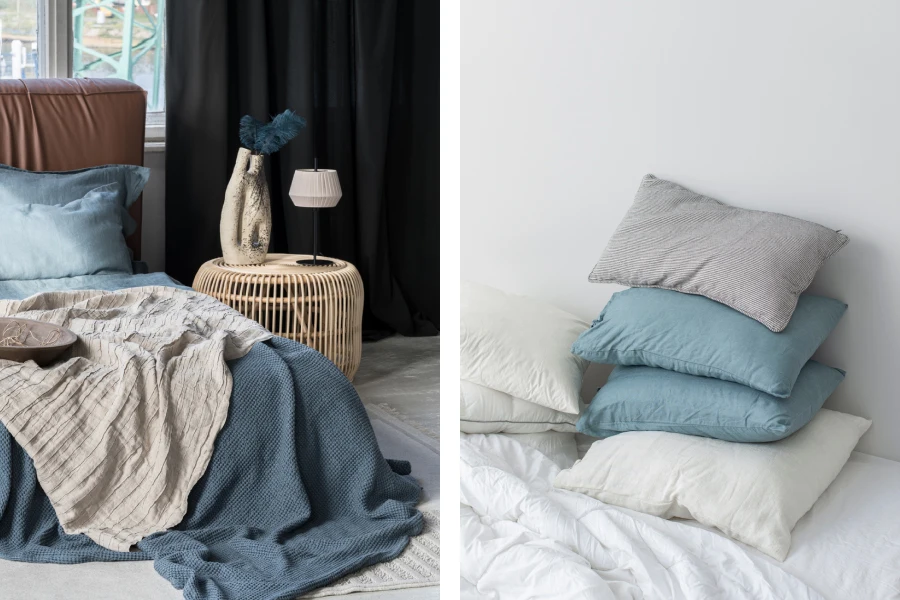
To cater to these regional variations, retailers can tailor their product offerings and marketing strategies accordingly. Highlighting the cooling properties of specific fabrics and showcasing bedding sets in regional-specific styles and colors can help attract local customers. Partnering with local influencers and leveraging social media platforms to showcase how bedding can be adapted to different climates can also be an effective approach.
Conclusion
As the summer heat persists, the importance of a cool, comfortable sleep environment cannot be overstated. By staying informed about market trends, understanding the role of materials and weaving in comfort, and strategically timing purchases, sellers can help their consumers find the ideal bedding to beat the heat. As the U.S. bedding market continues to grow, manufacturers and retailers who prioritize innovative, cooling fabrics and designs will be well-positioned to meet the evolving needs of discerning customers.
